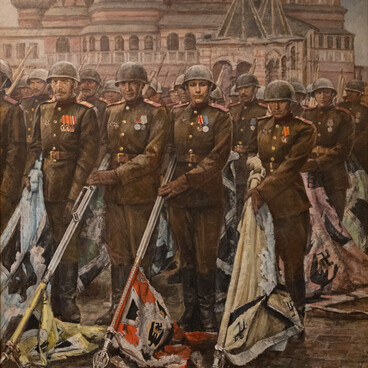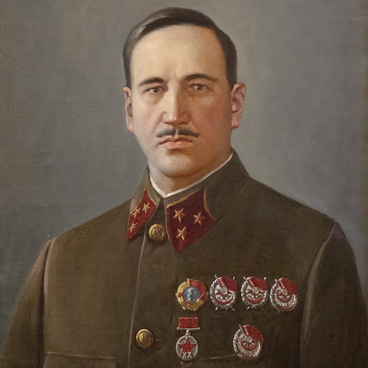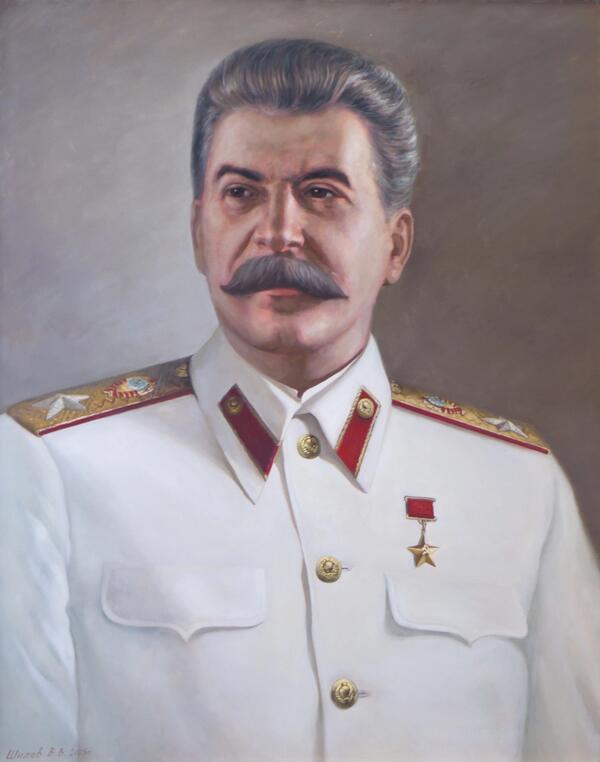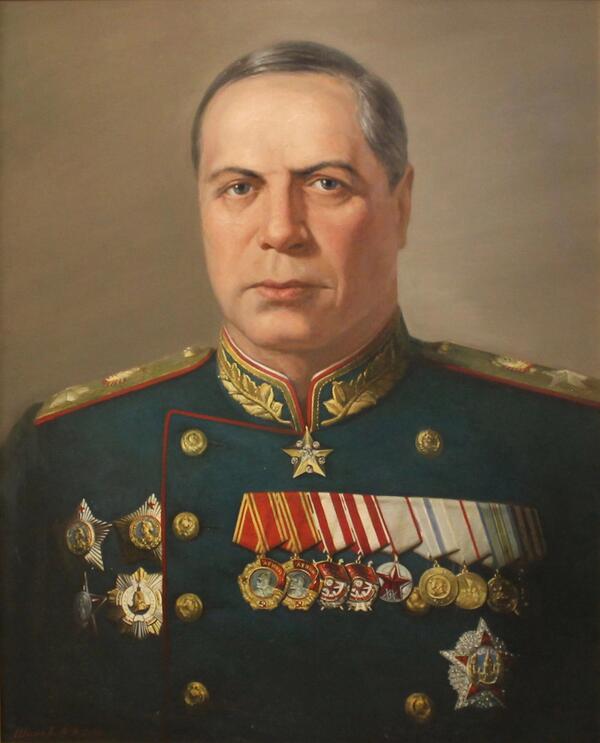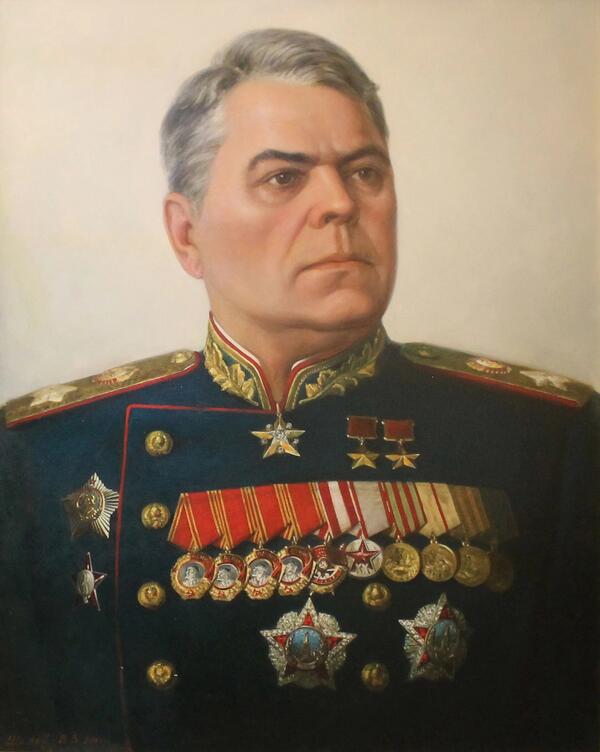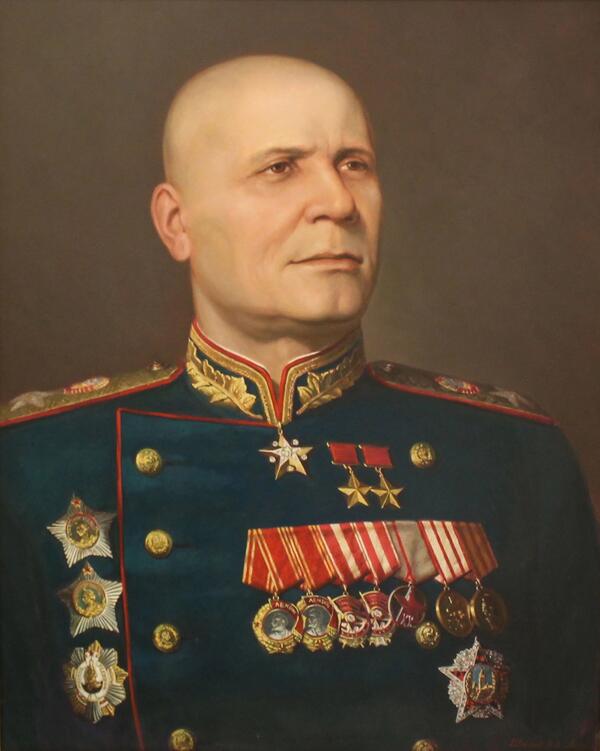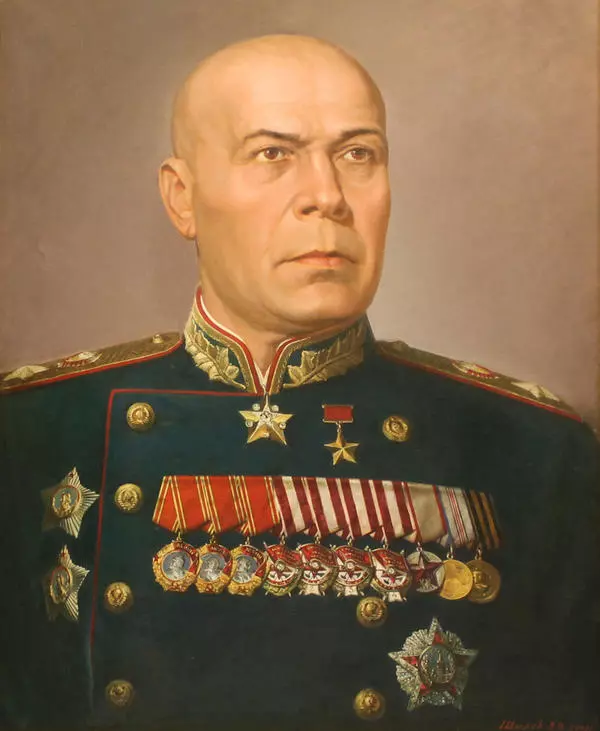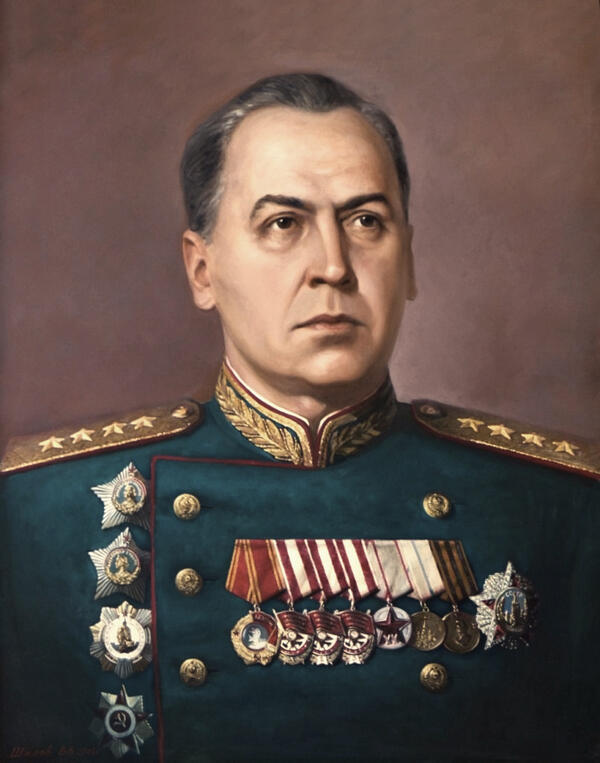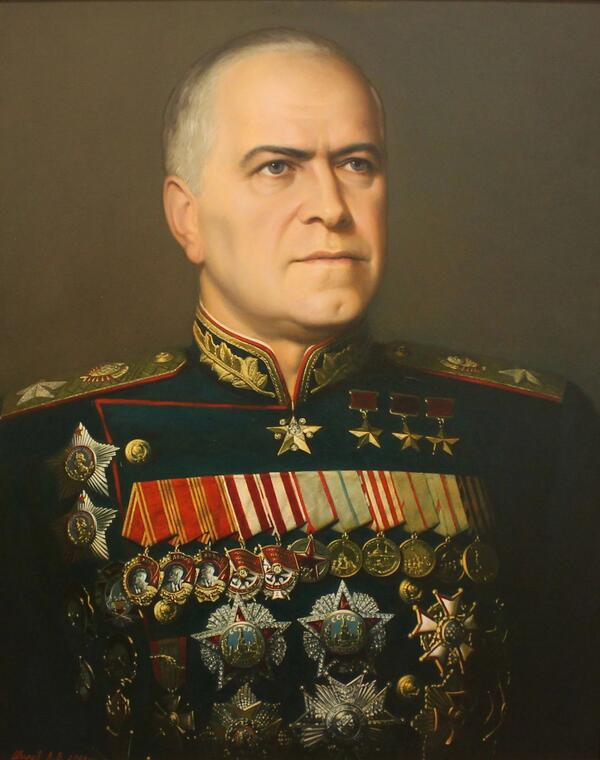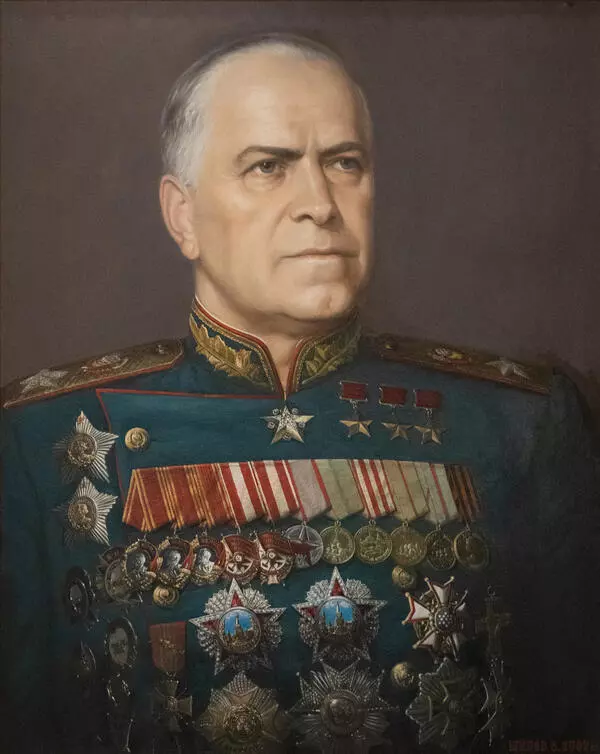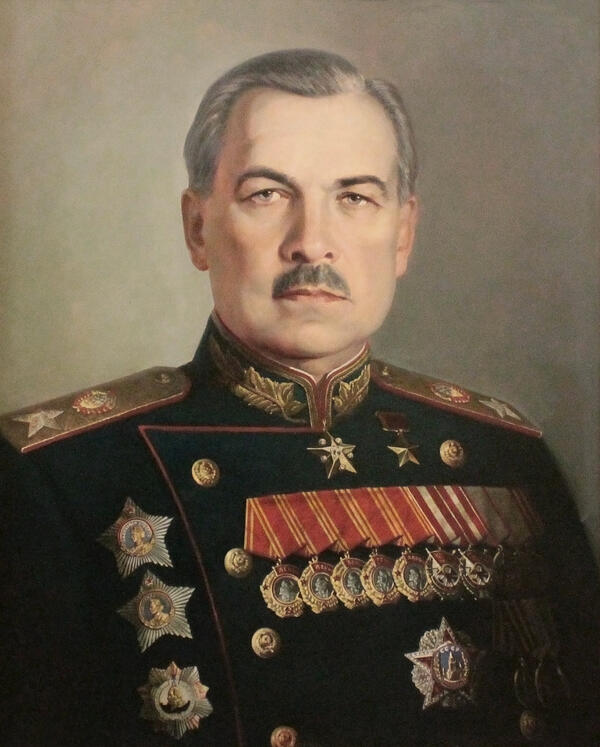The exhibition titled “The Feat of the Army” includes a portrait of Generalissimus of the Soviet Union Joseph Stalin created by the talented painter Viktor Shilov. Stalin was the leader of the Soviet Union for thirty years. Although he is a very controversial figure, there is no denying that he had a very profound influence on the history of the 20th century.
Joseph Vissarionovich Stalin (Jughashvili) was born on December 21, 1879, in the town of Gori. At the age of fifteen, he embraced the revolutionary movement and in 1901, joined the Russian Social Democratic Labor Party. After the RSDLP split, Stalin chose to go with Vladimir Lenin and the Bolsheviks. Before the Revolution of 1917, he was repeatedly arrested and underwent several exiles from which he escaped. In 1917, Stalin arrived in Petrograd and found himself in the midst of the revolution.
After the October Revolution, Stalin was appointed People’s Commissar for Nationalities and later was elected to the All-Russian Central Executive Committee. In 1918, Stalin was sent to the Volga region to take charge of food procurement. Having reached Tsaritsyn, Stalin took control of defending the city and secured the victory of the revolutionaries. During the Russian Civil War, Stalin gained experience in organizing and conducting military operations which proved useful during the Great Patriotic War.
In 1922, Stalin was elected General Secretary of the Central Committee of the Communist Party of the Soviet Union. Following Lenin’s death in 1924, Stalin assumed leadership over the country. In the 1920s, he defeated the opposition, which helped him organize rapid collectivization and industrialization of the Soviet Union.
The USSR managed to catch up with the European countries and even surpass them in some areas.
Stalin was a determined national leader. During the first days of the Great Patriotic War, a decision was made to organize more reserve divisions than previously planned. On June 23, 1941, the Headquarters of the Main Command was established, managed by Semyon Timoshenko. On July 10, it was transformed into the Headquarters of the High Command, and Joseph Stalin himself became the chairman. The complete centralization of power made it possible to address the most critical issues without any delay. In the scariest months of 1941, it helped the Soviet Union to defend the front line, evacuate the industry, and organize the reserves.
Joseph Vissarionovich Stalin (Jughashvili) was born on December 21, 1879, in the town of Gori. At the age of fifteen, he embraced the revolutionary movement and in 1901, joined the Russian Social Democratic Labor Party. After the RSDLP split, Stalin chose to go with Vladimir Lenin and the Bolsheviks. Before the Revolution of 1917, he was repeatedly arrested and underwent several exiles from which he escaped. In 1917, Stalin arrived in Petrograd and found himself in the midst of the revolution.
After the October Revolution, Stalin was appointed People’s Commissar for Nationalities and later was elected to the All-Russian Central Executive Committee. In 1918, Stalin was sent to the Volga region to take charge of food procurement. Having reached Tsaritsyn, Stalin took control of defending the city and secured the victory of the revolutionaries. During the Russian Civil War, Stalin gained experience in organizing and conducting military operations which proved useful during the Great Patriotic War.
In 1922, Stalin was elected General Secretary of the Central Committee of the Communist Party of the Soviet Union. Following Lenin’s death in 1924, Stalin assumed leadership over the country. In the 1920s, he defeated the opposition, which helped him organize rapid collectivization and industrialization of the Soviet Union.
The USSR managed to catch up with the European countries and even surpass them in some areas.
Stalin was a determined national leader. During the first days of the Great Patriotic War, a decision was made to organize more reserve divisions than previously planned. On June 23, 1941, the Headquarters of the Main Command was established, managed by Semyon Timoshenko. On July 10, it was transformed into the Headquarters of the High Command, and Joseph Stalin himself became the chairman. The complete centralization of power made it possible to address the most critical issues without any delay. In the scariest months of 1941, it helped the Soviet Union to defend the front line, evacuate the industry, and organize the reserves.

